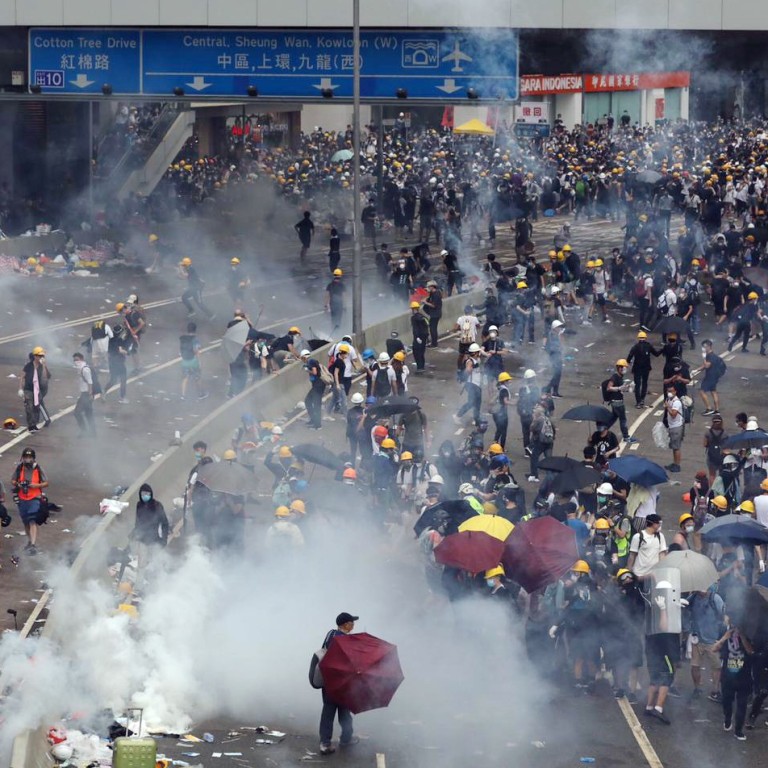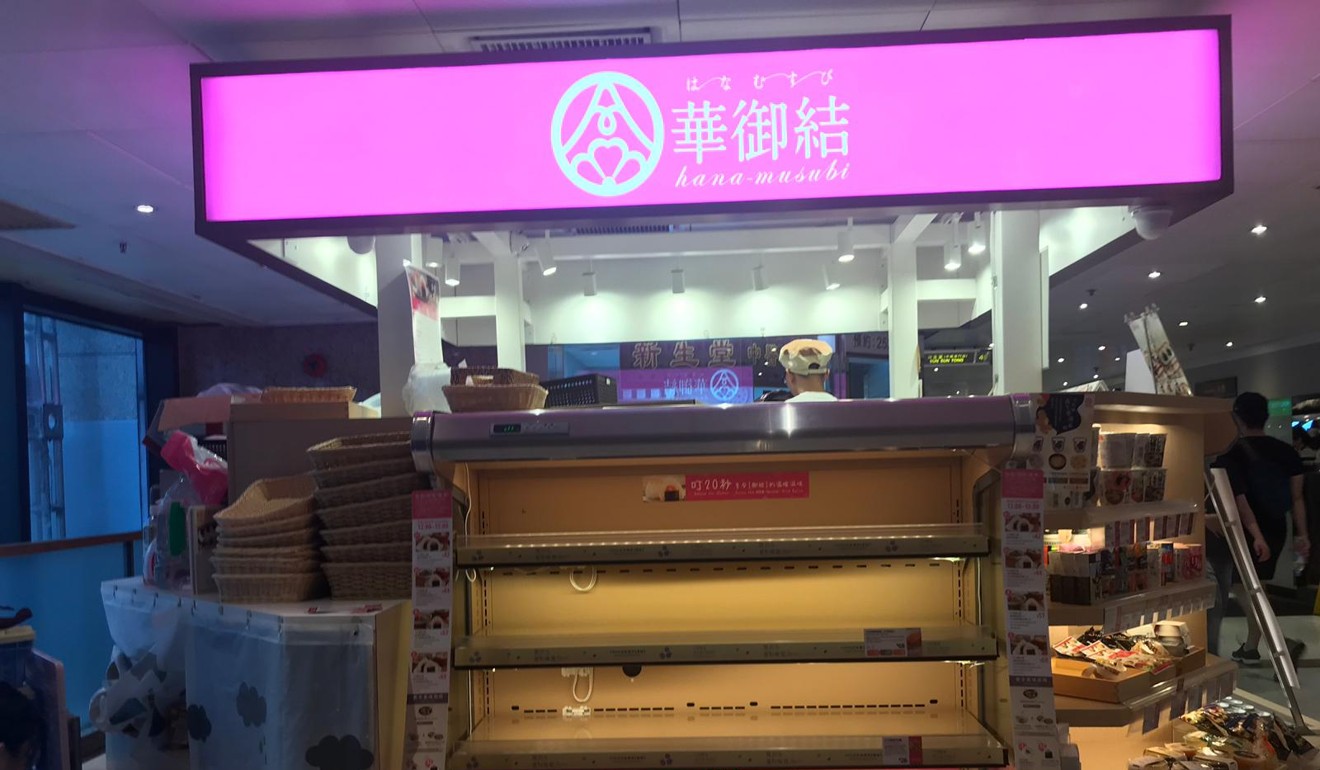
Mixed fortunes for businesses as Hong Kong anti-extradition protests force some to close and bring a roaring trade to others
- Large crowds and blocked roads around government buildings in Admiralty frustrate some neighbouring shops and restaurants
- Though some businesses shut early, heavy footfall is money-spinner for many
The spiralling protest against the extradition bill in Admiralty on Wednesday had a contrasting effect on businesses in the surrounding areas, with some outlets forced to close temporarily, while other shops and restaurants did a healthy trade, to the point of leaving some emptied of stock.
The thousands of protesters who surrounded the government complex in Tamar hampered road access to commercial buildings such as the Admiralty Centre, the United Centre and Citic Tower, while cars intentionally parked in the middle of Harcourt Road to block traffic.
The blocked roads and unfolding chaos prompted many shops at the International Finance Centre in Central, about 1km away from Admiralty, to shut their doors early for the day.
Among those that closed were the Apple Store, Lane Crawford, NARS, SK-II, Yves Saint Laurent and Chanel.
A spokeswoman for an upmarket Chinese restaurant in the building said the difficulty travelling and uncertainty caused by the protests prompted a number of customers to cancel dinner bookings.
In Admiralty, bank services were suspended, with branches and centres of HSBC, Hang Seng Bank, Standard Chartered, Bank of East Asia and DBS forced to shut until further notice.
Some restaurants, however, had a good run on business as protesters fed themselves before returning to the streets.
Security forces resorted to weapons such as tear gas, pepper spray, plastic bullets and beanbag rounds and called the protests a riot. The scene was reminiscent of the 79-day pro-democracy Occupy movement in 2014.
On Wednesday, restaurants in Citic Tower were swamped with hungry protesters. Marchers sat peacefully on the floor, eating lunch and chatting with fellow protesters.
At Citic Tower, protester Yin Yuen-yan, a 20-year-old student, wolfed down the last lunchbox sold by Chinese takeaway store Original Taste Workshop.

Finding food was not easy, with hundreds of protesters taking a lunch break in the air-conditioned building.
“I went looking through two or three floors before I found somewhere to eat,” Yin said.
The protesters, mostly younger people, gathered outside the government and Legislative Council complex in an attempt to derail the planned second reading of the extradition bill at 11am on Wednesday. Legco postponed the meeting until further notice.
Shelves at Vingo, a convenience store in Citic Tower, were practically bare after lunch time due to high demand and suspended deliveries of new stock.

“No deliveries are reaching our store, not even newspapers,” a female employee who preferred to remain anonymous said. “I think we are making more money than usual today but we haven’t totted it all up yet. As you can see, there are lots of people.”
The shop was also running out of change and asked customers to pay by Octopus card.
Mr Tomahawk, a Western steakhouse at Citic Tower, was having difficulty getting ingredients and supplies delivered.
“Supplies are usually dropped off at around 10am. But none have arrived yet,” Karen Fu Zhi-kai, a staff member said. “Our place usually serves office workers, but today there are way more protesters in the restaurant,” she said.

In the Admiralty Centre, the atmosphere was tenser later in the afternoon, with protesters occasionally shouting and urging people to run and injured marchers coming in to look for shelter. A shop owner opened her kitchen to protesters to wash tear gas out of their eyes.
In the shopping area of the Admiralty Centre, Japanese rice-ball store Hana-Musubi saw a 50 per cent rise in sales, with stocks eventually running out. “The roads are blocked so the rice balls cannot be delivered. We sent a colleague out to get supplies instead,” Chai Hoi-ching, a member of staff, said. The shop then turned to selling siu mai dumplings and other hot food.

On the ground floor of the Admiralty Centre, a fashion boutique was closed for the day, with large yellow posters in its windows calling for “urgent prayers for Hong Kong” as the city “is in trouble.”
Self-employed taxi driver, Wong Po-keung, 72, said he lost about one-third of business on Wednesday as a result of the protests.
“If you need to get from Causeway Bay to Admiralty, there is only one way through Kennedy Road and that requires making a big U-turn,” he said. “Protesters should consider our livelihood by not blocking off the roads.”
Director of the ACE Centre for Business and Economic Research, professor Andy Kwan Cheuk-chiu, believed the disruption to business in Admiralty would last at most for one to two weeks as the scale was much smaller than the Occupy movement. “This time the impact is more on Admiralty, unlike in the Occupy movement which also affected Causeway Bay, Mong Kok and Central.”


